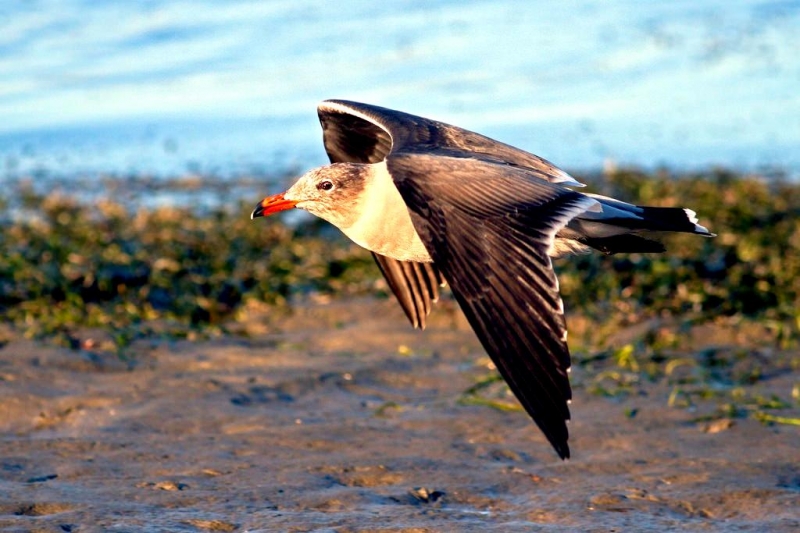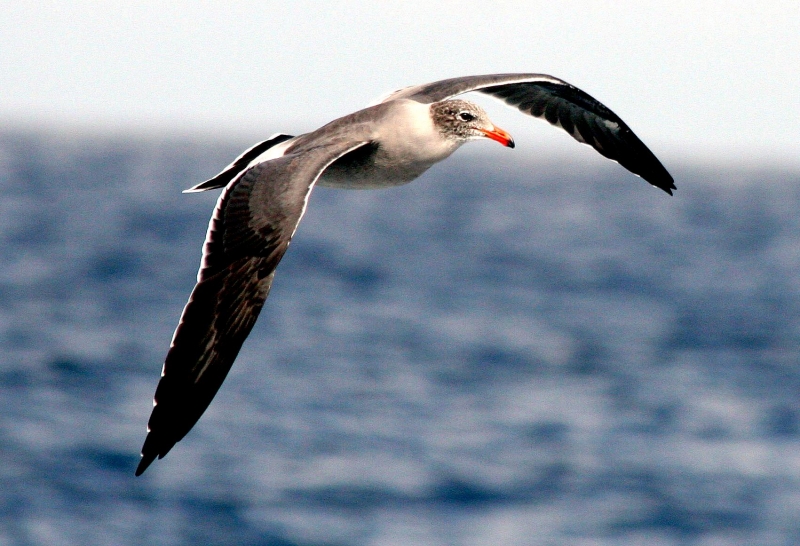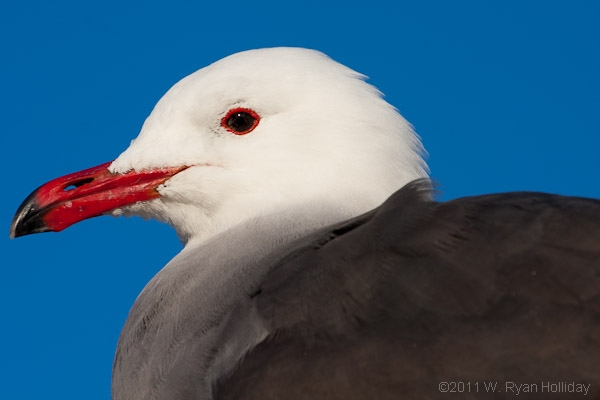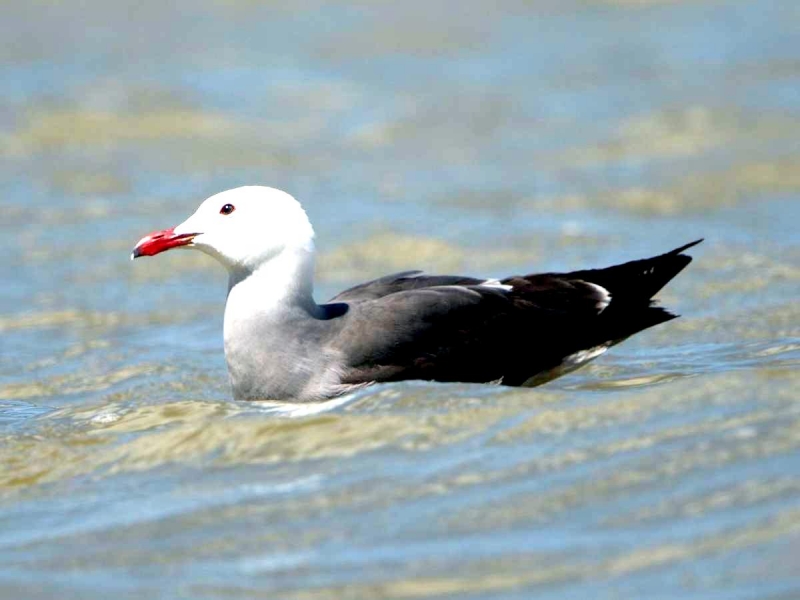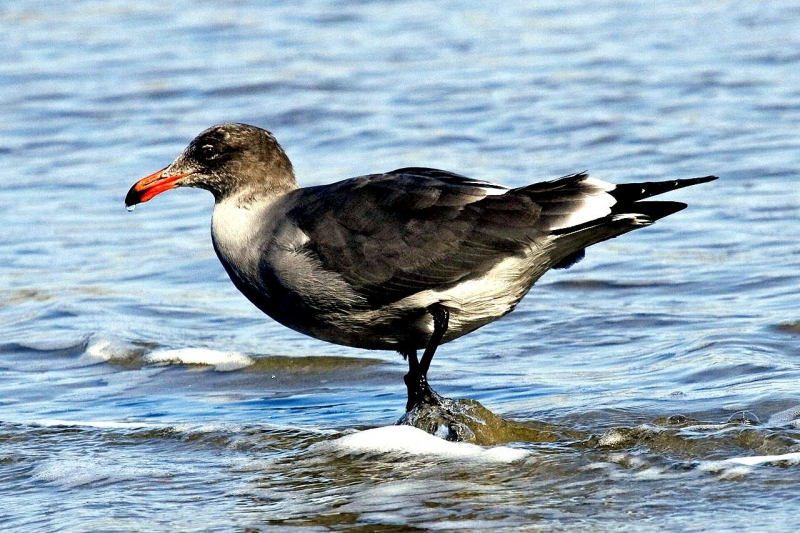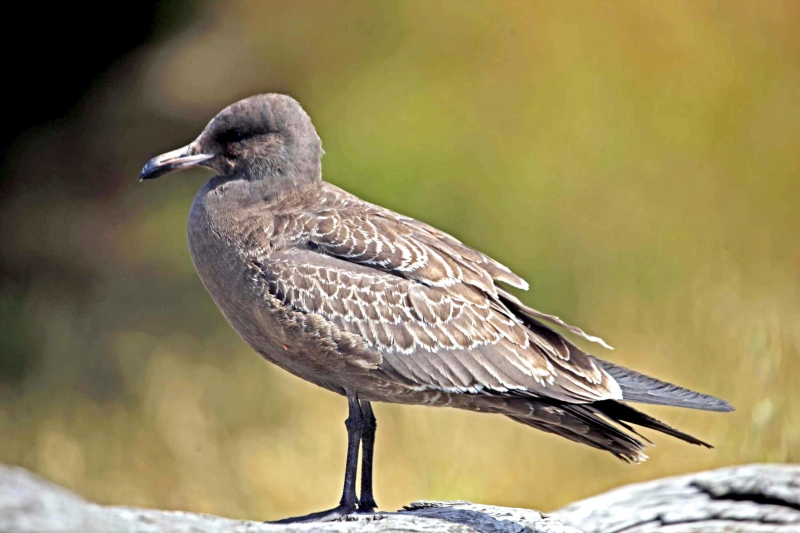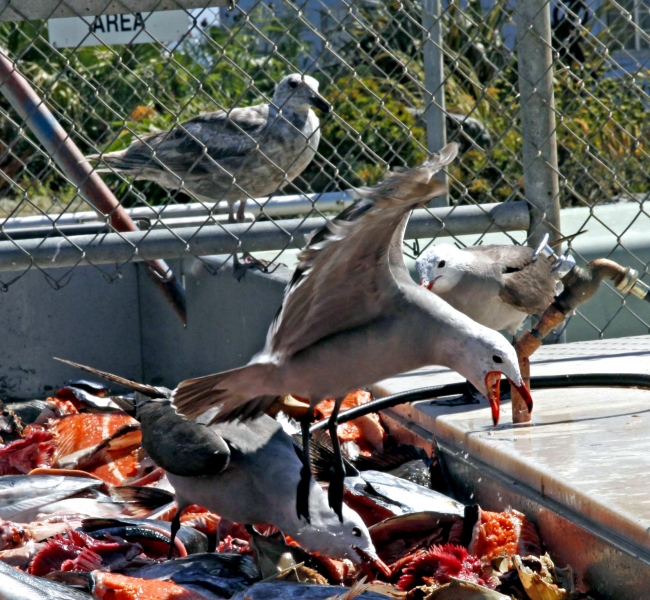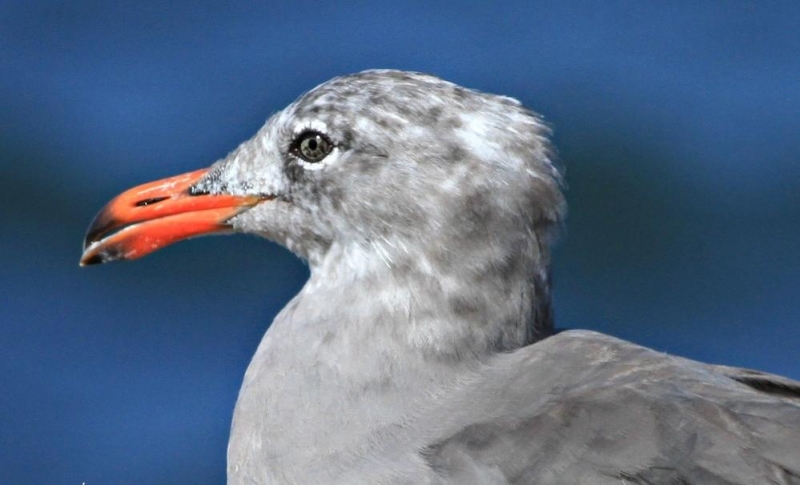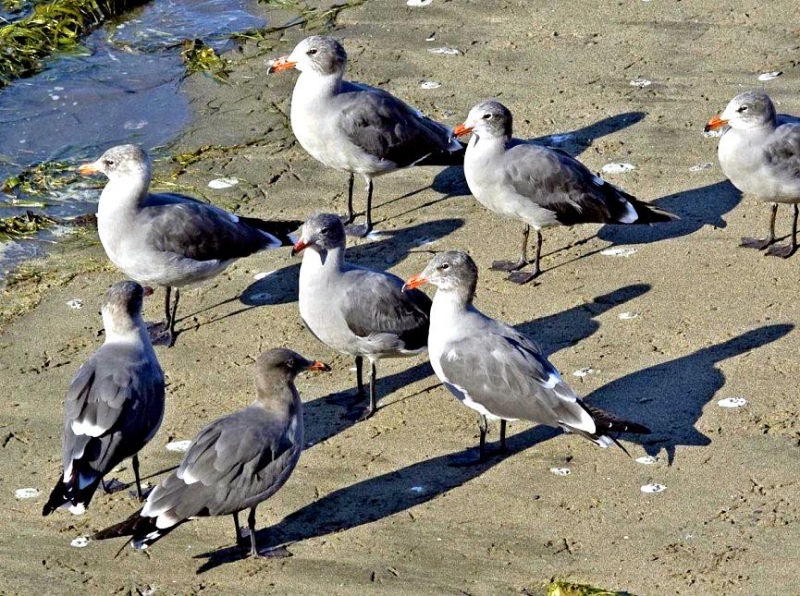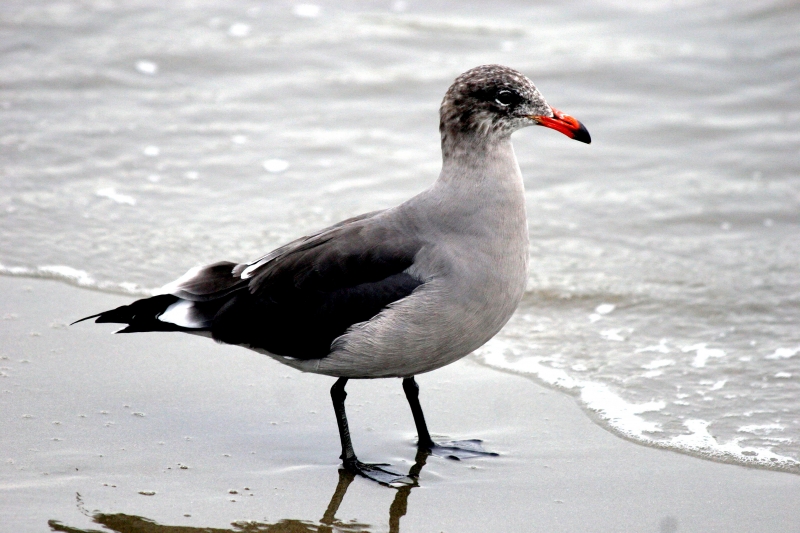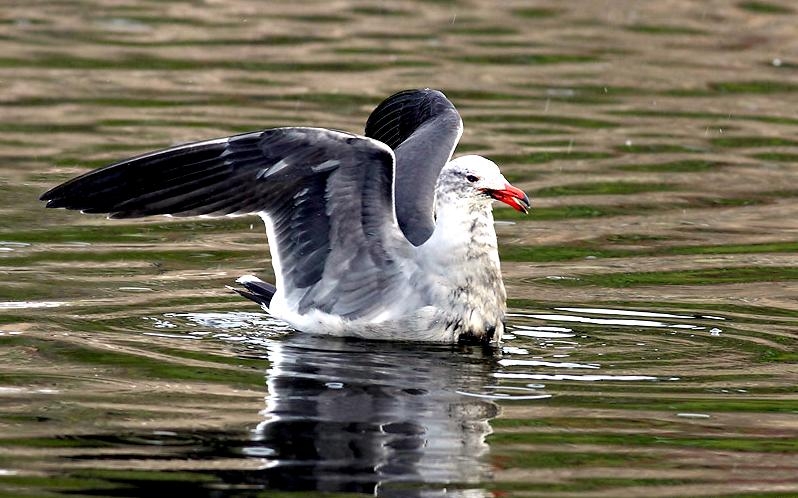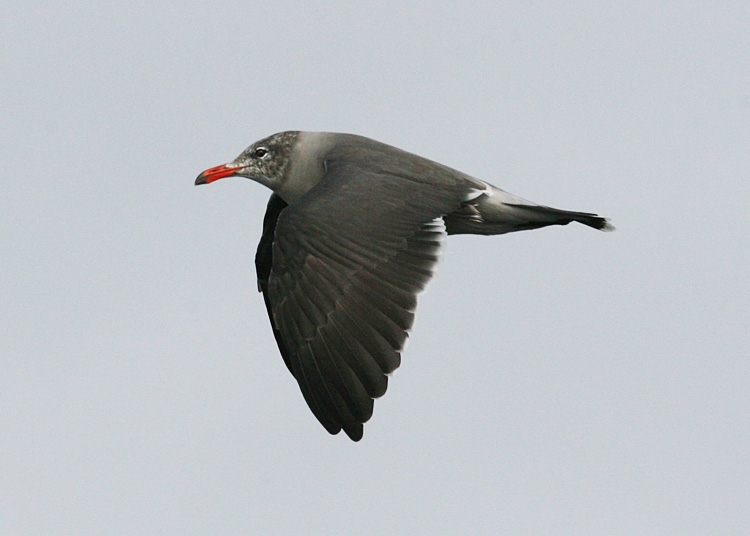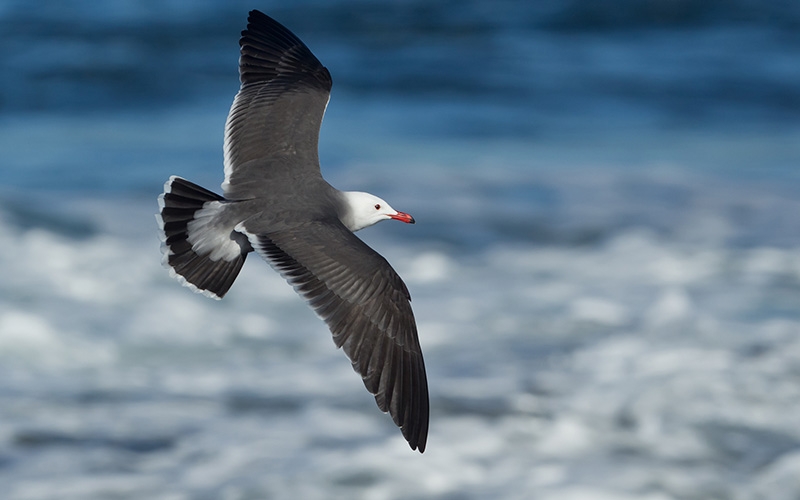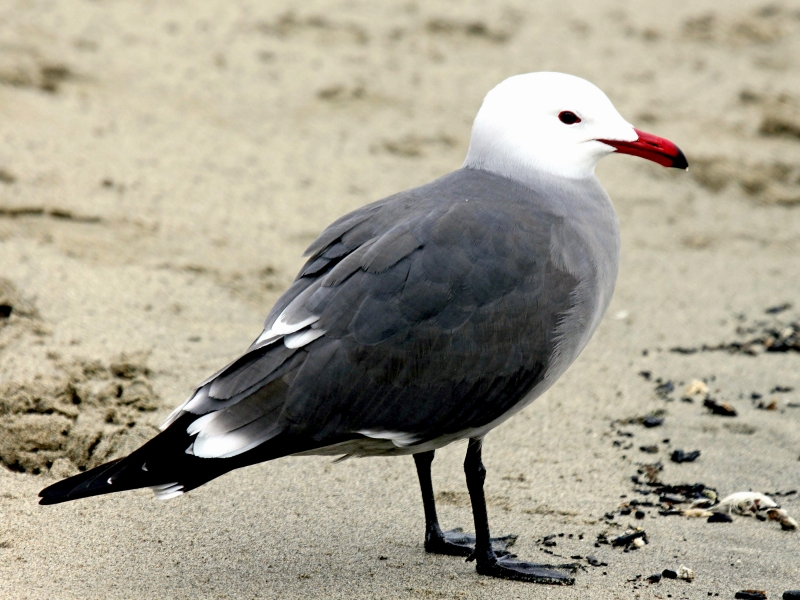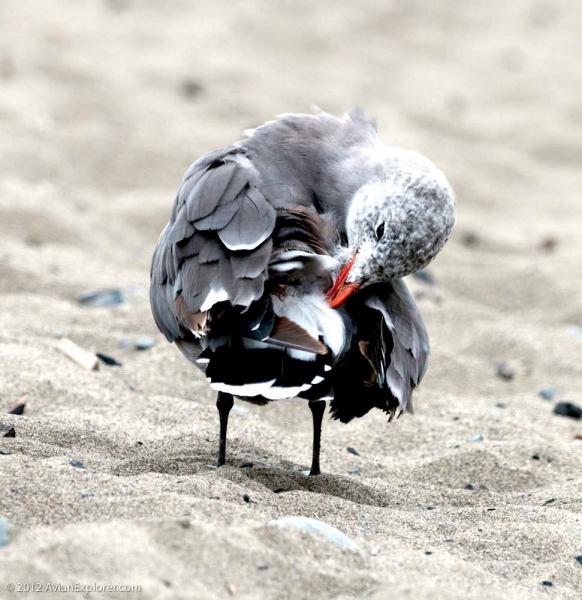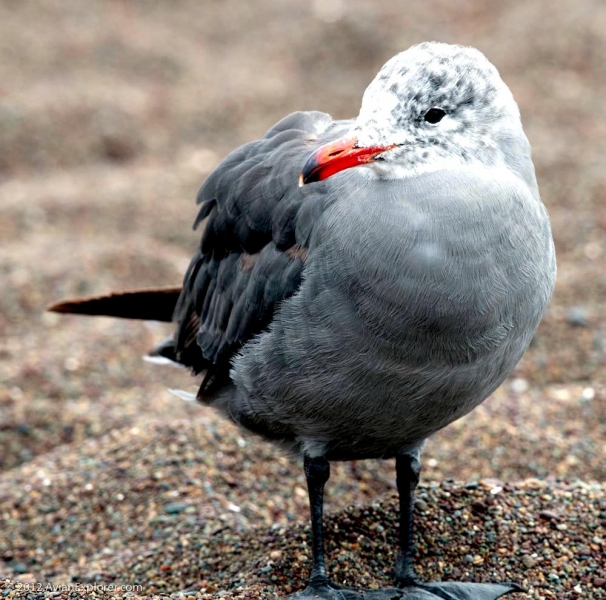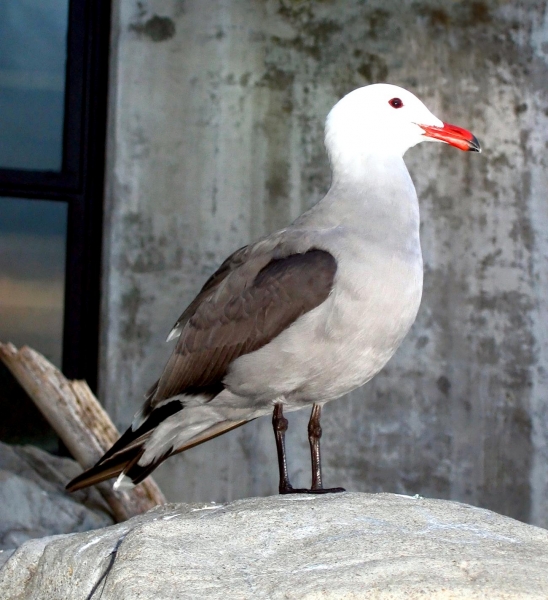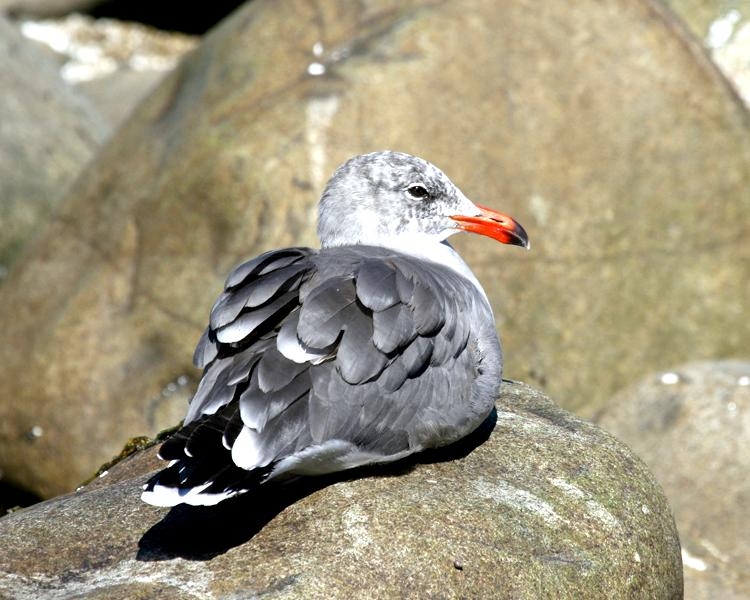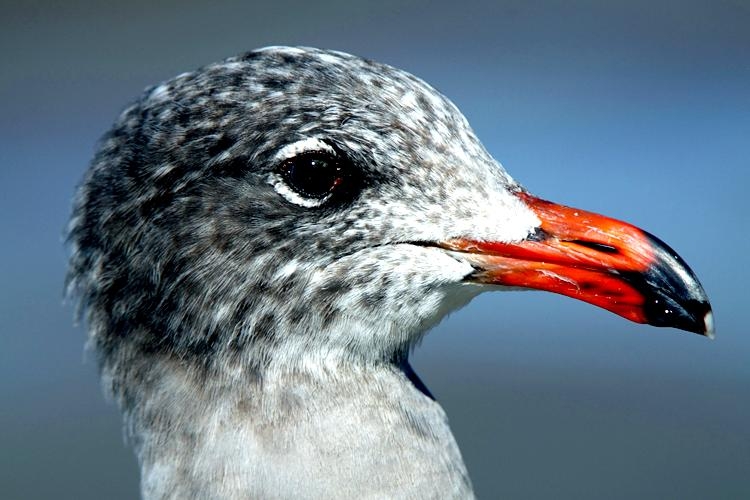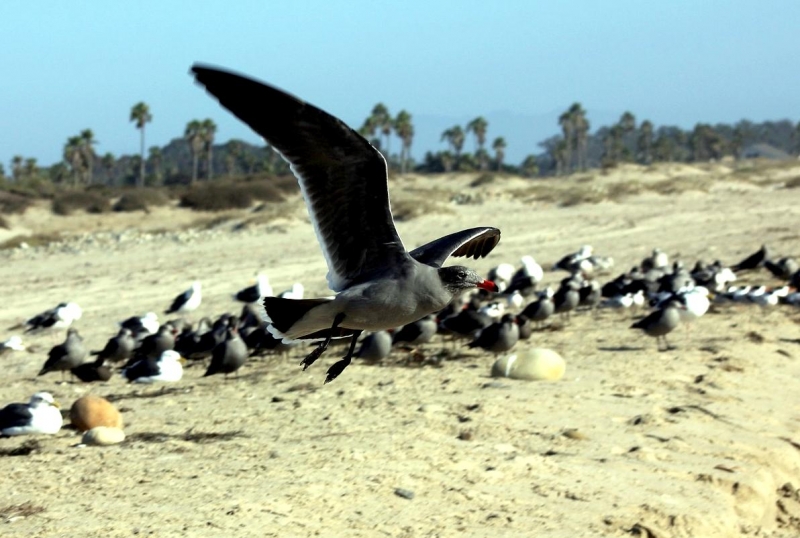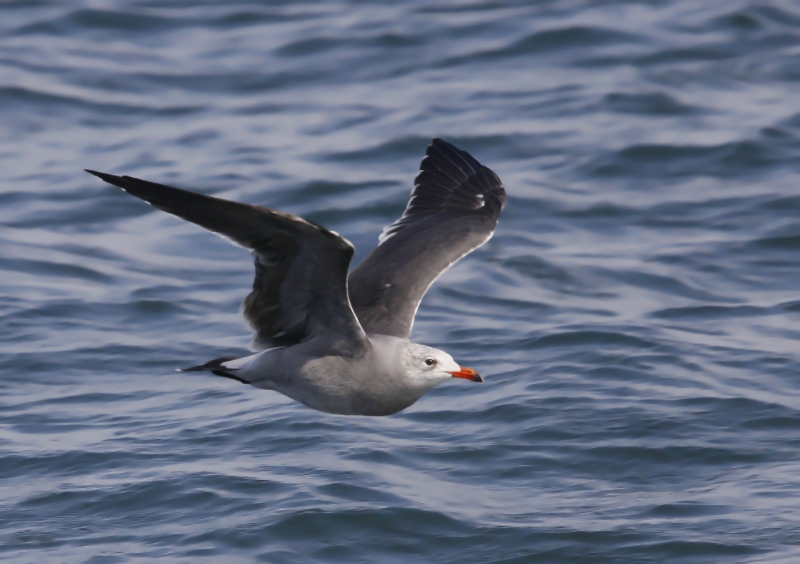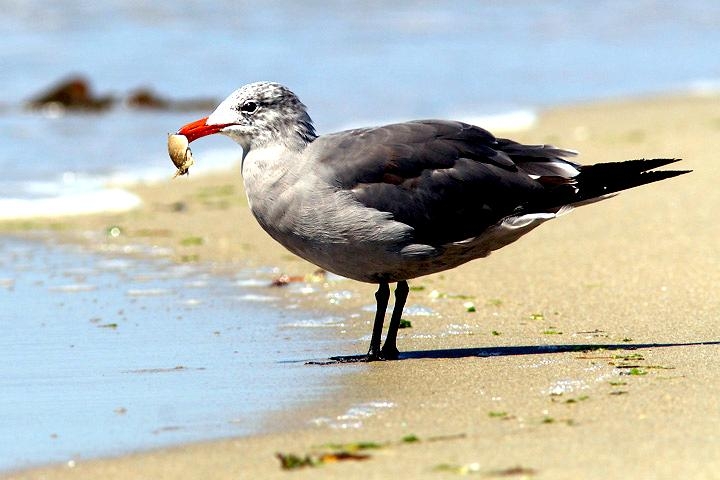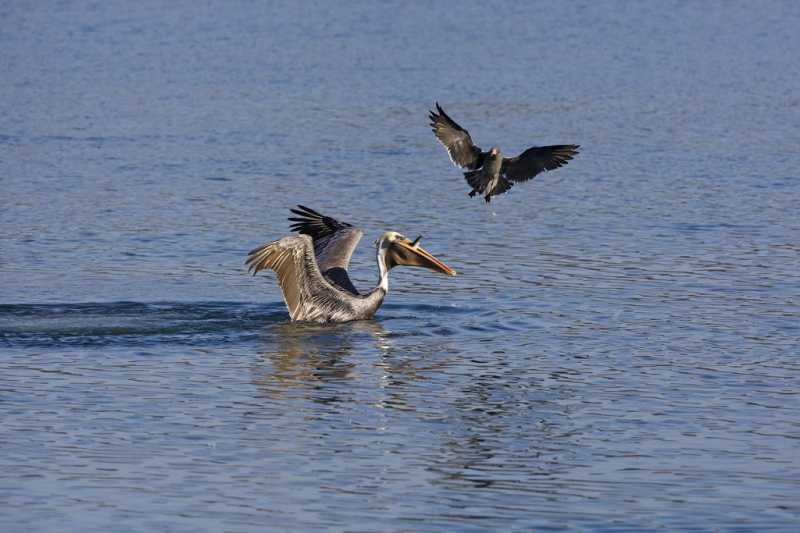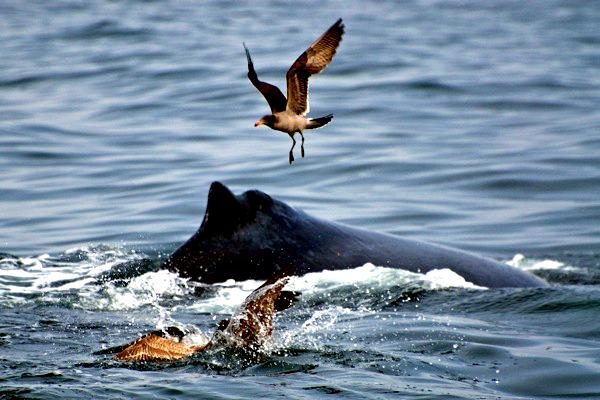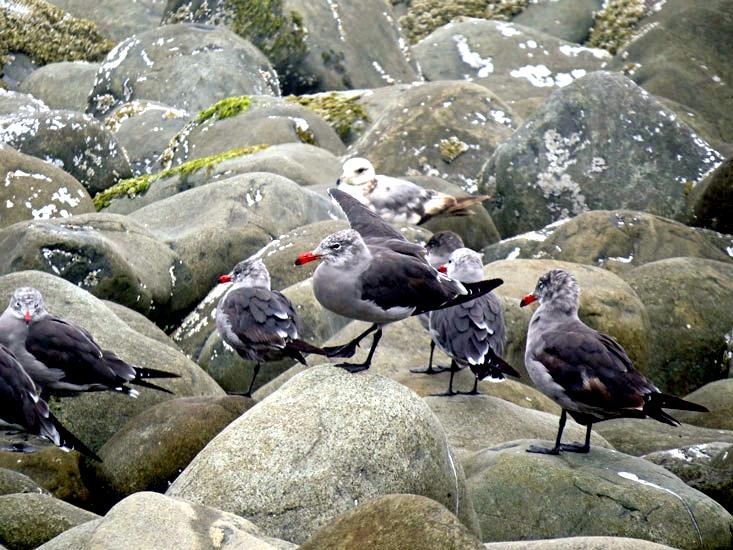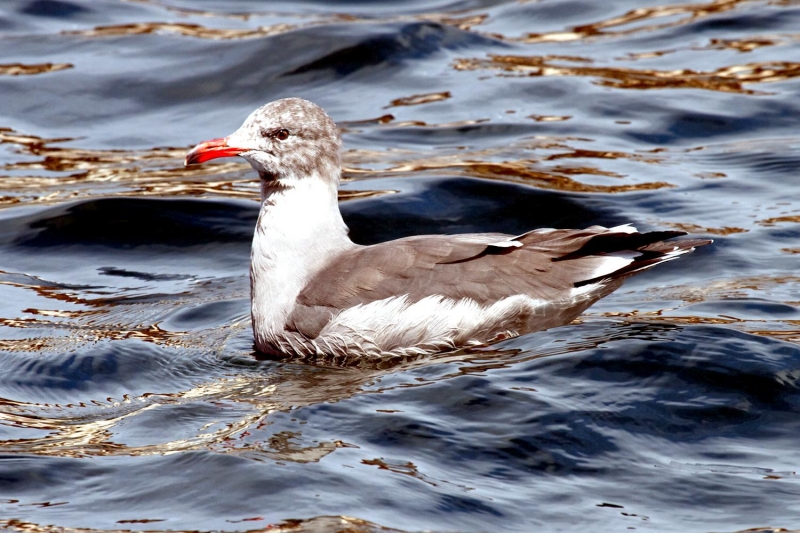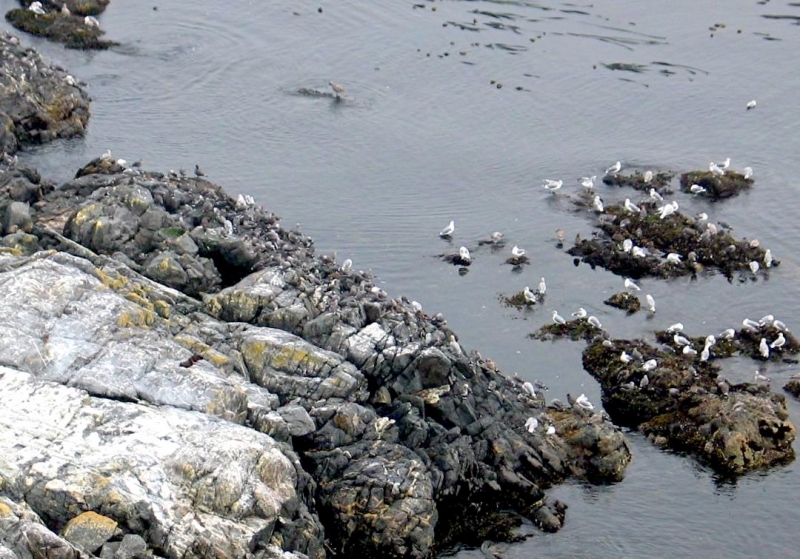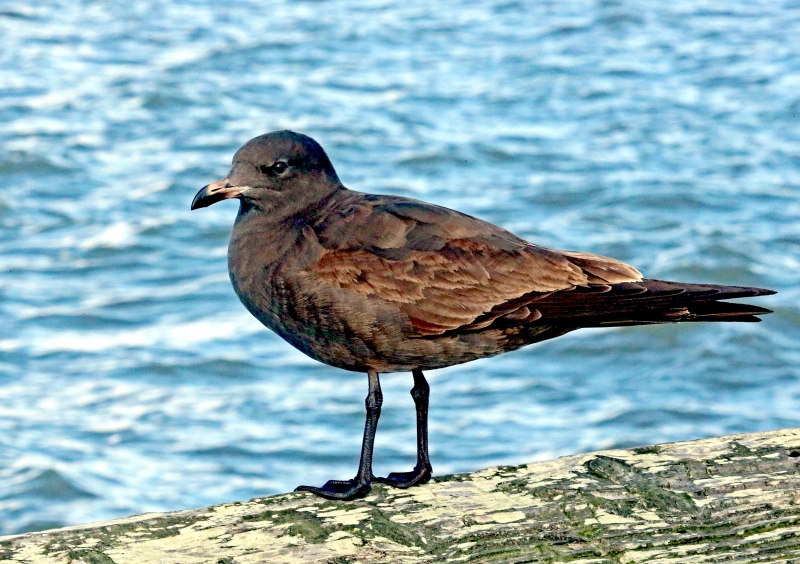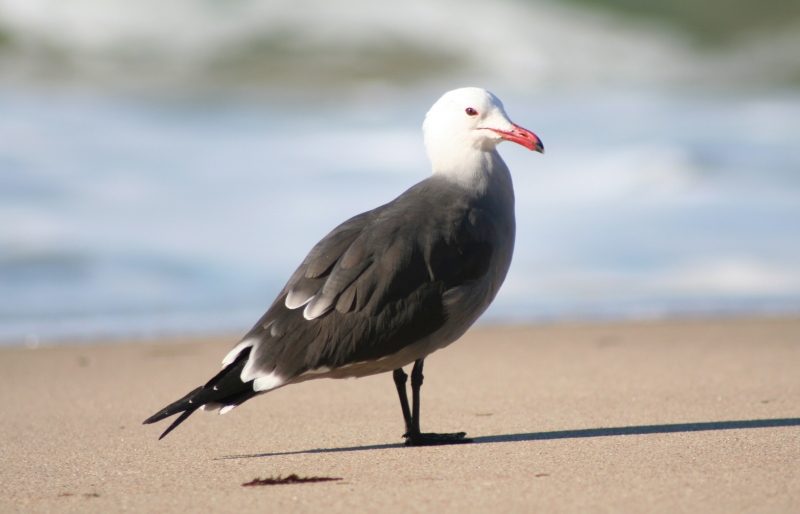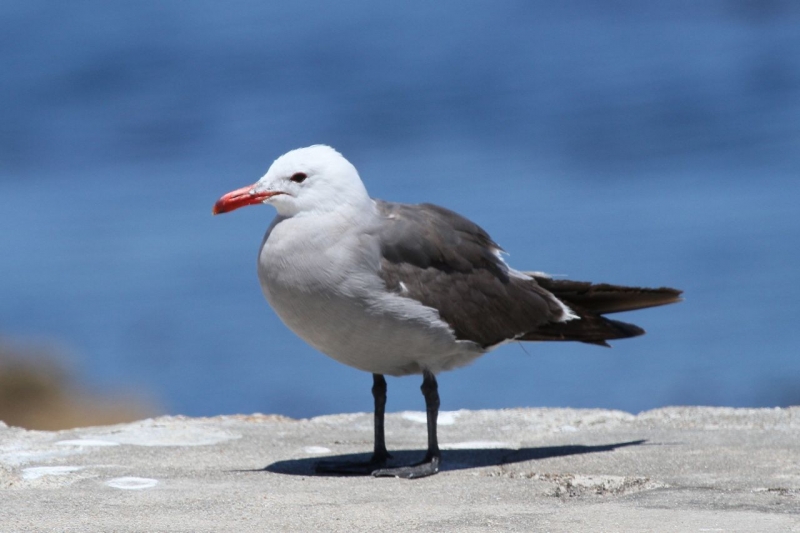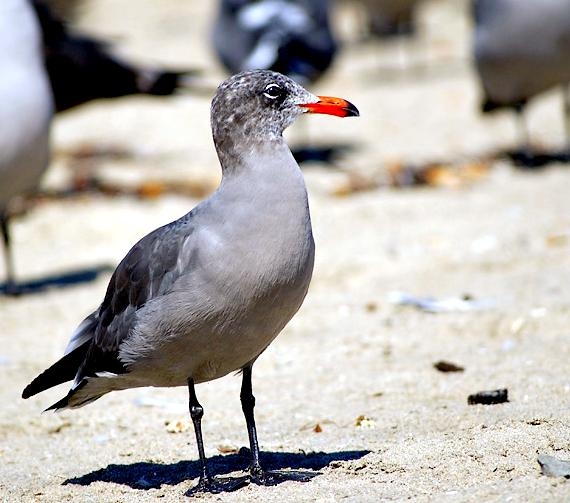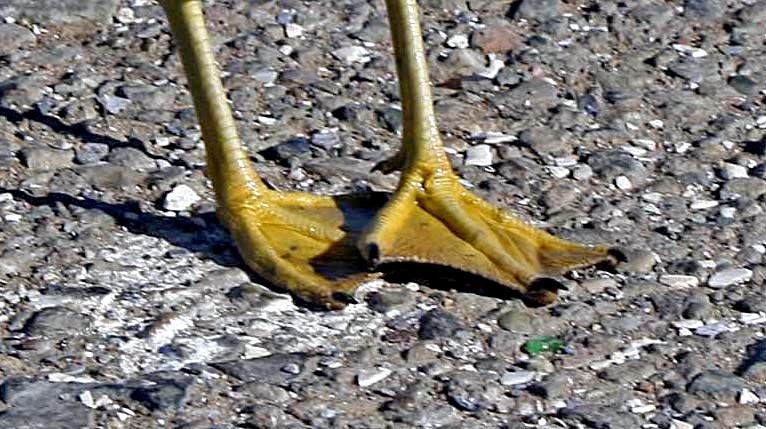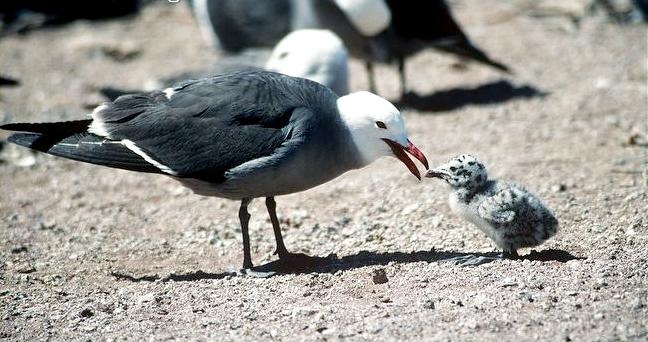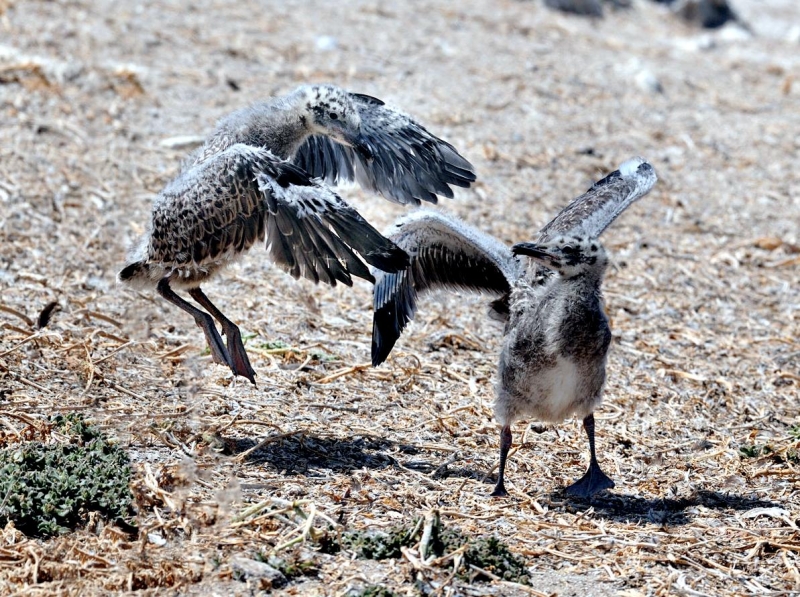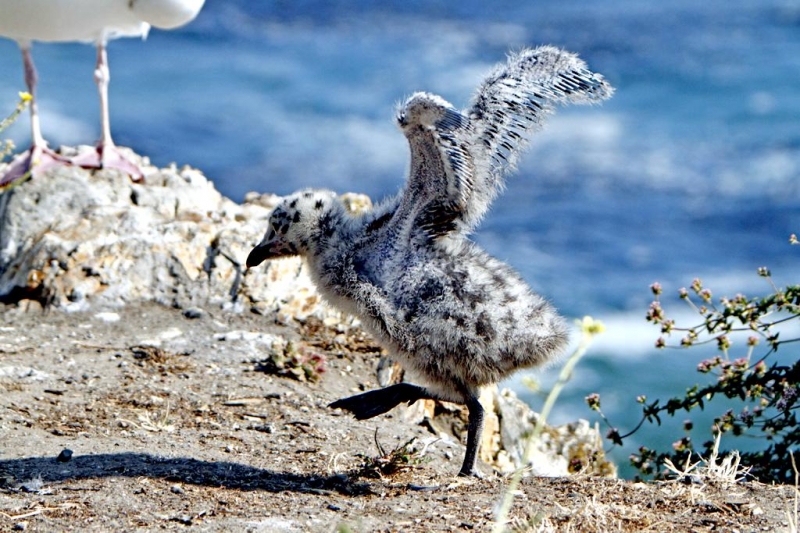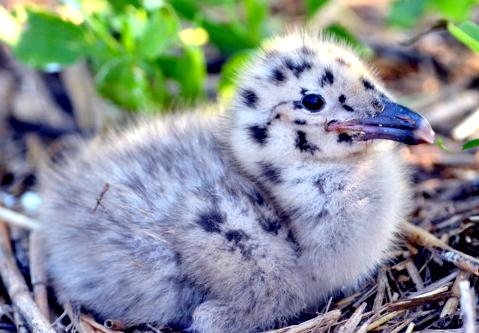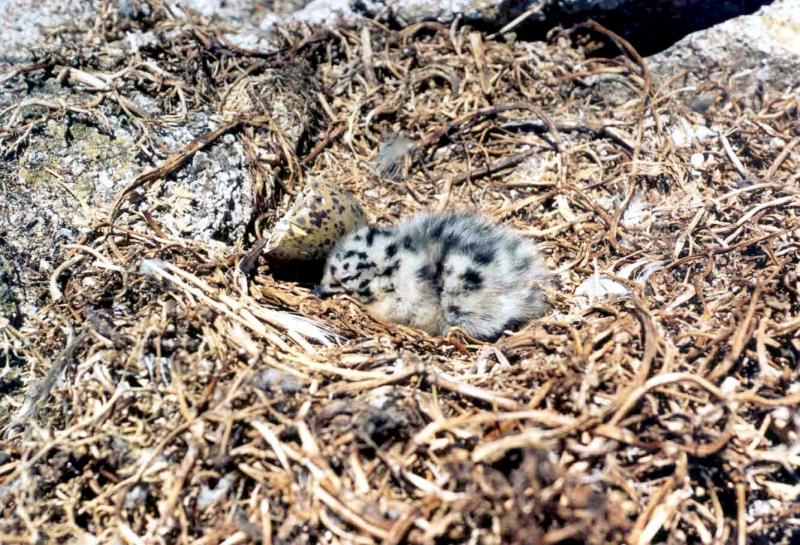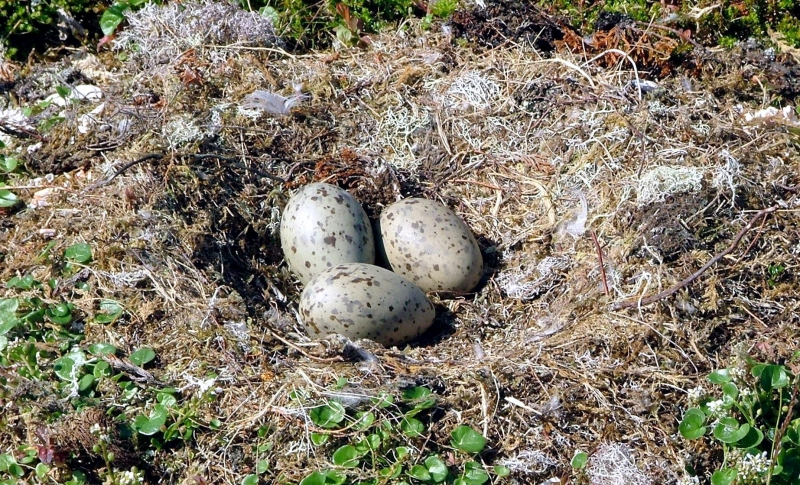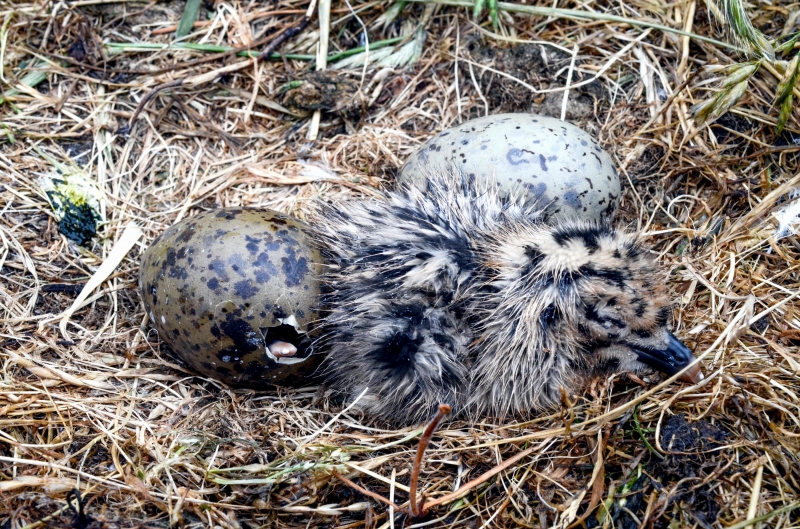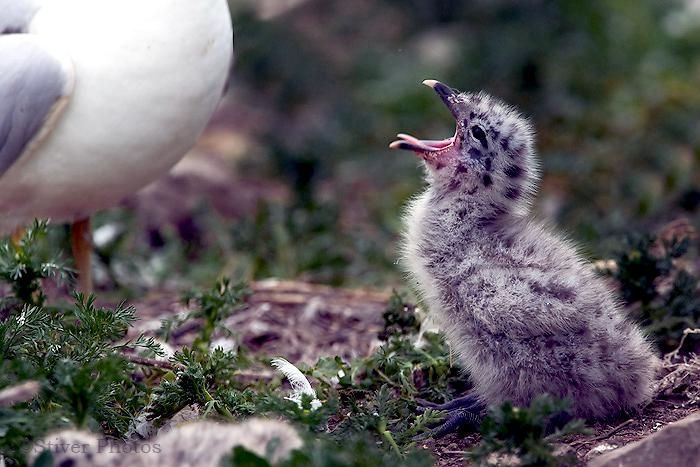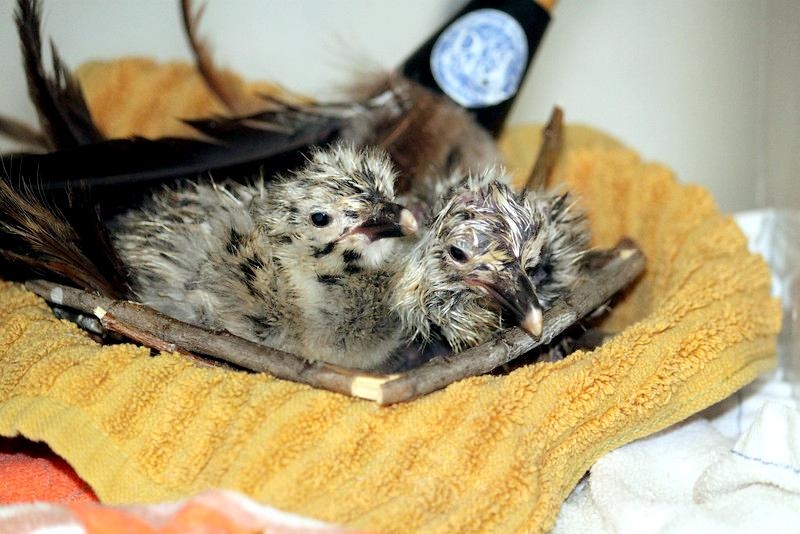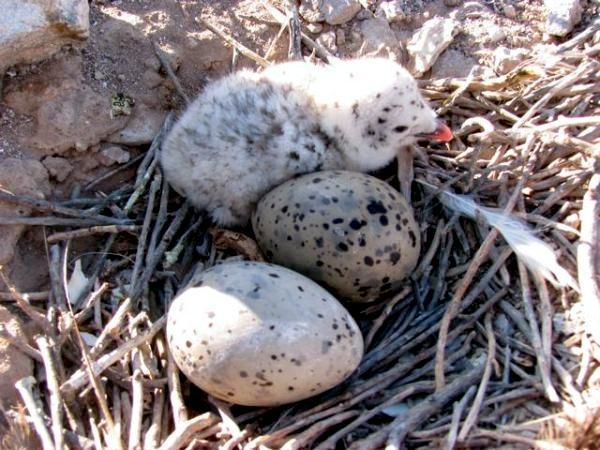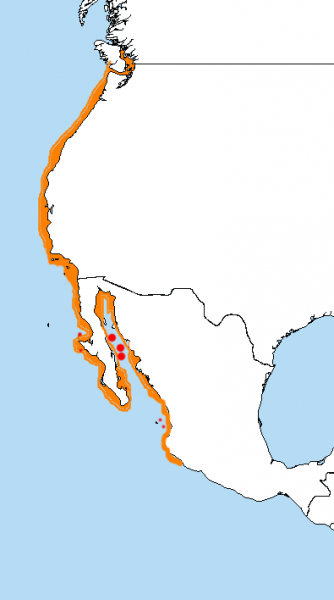“Larus heermanni”
The strikingly marked Heermann’s Gull is common along the West Coast of the United States. This gray-bodied, white-headed gull breeds in Mexico and then moves north along the Pacific Coast to southern British Columbia. The species is named after Adolphus Lewis Heermann, a nineteenth-century explorer & naturalist. The Heermann’s Gull like many other gulls, frequently steals food from other birds. The Brown Pelican is a frequent victim. An adult Heermann’s Gull is most likely to try to steal food from an adult pelican and an immature gull is more likely to steal from an immature pelican. The Heermann’s Gull is the only North American gull that breeds south of the United States and comes north to spend the non-breeding season. After breeding is over in July, the Heermann’s Gull quickly comes north all the way to southern Canada. It heads back southward by December and most breeders are at the breeding islands by March. Perhaps as a result of the increasing populations in Mexico, several attempts have been made by Heermann’s Gulls to breed in California. The first was on the island of Alcatraz. So far these attempts have been unsuccessful, but eventual successful nesting is expected. Every summer, flocks of these distinctive gulls move north along the Pacific Coast from their nesting grounds in western Mexico. This movement is timed with the northward flight of Brown Pelicans; when a pelican comes to the surface after plunging into the water for fish, a Heermann’s Gull is often waiting to try to snatch the fish from the pelican’s pouch. Although this seabird is not large, it is aggressive and harasses other birds to make them drop their catch.
Heermann’s Gulls nest primarily on islands in the Gulf of California, and the largest colonies are on Rasa and Little Cardinosa island. The Rasa colony numbers around 150,000 to 200,000 pairs. Most other colonies, including those on the San Benito Islands and San Roque Island on the Pacific coast and south on islands off the coast of mainland Mexico to Nayarit, number no more than 300 pairs each. After the breeding season in midsummer, most of the population migrates north along the Pacific coast of the United States and as far as British Columbia. Some sub-adult birds remain in this non-breeding range year round. The only site where Heermann’s Gull occurs inland regularly is the Salton Sea in southeastern California, where it is rare but increasing. Heermann’s Gull’s feeding range, is almost exclusively coastal, ranging only a few dozen miles out to sea to forage. Heermann’s Gulls feed mostly on small pelagic fish such as sardines and anchovies and occasionally on crustaceans, mollusks and other marine organisms scavenged from the beach, kelp beds, and fishing boat dumps. Heermann’s Gulls may build a nest of sticks and small rocks, sometimes lined with feathers, on the ground or between large rocks and boulders or the “nest” may be a simple depression in the ground with no lining or just a scanty lining of shells or sticks. The clutch consists of 1-2 eggs, variously colored and patterned with dark spots and blotches.

